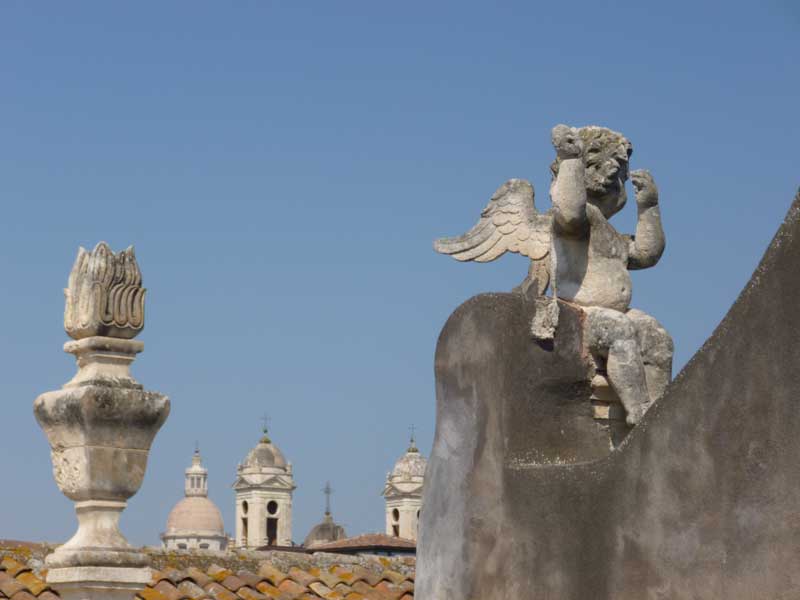Catania is dramatically situated between the Ionian Sea and Mount Etna, Europe’s greatest active volcano. As well as ruins from the ancient past, the town boasts a wealth of fine Baroque architecture.
- Sicily destinations and practicalities: full menu (at foot of this page)
Some visitors love Catania, others – generally those who pass through briefly – are not so keen. It’s a city with a strong personality, dominated by the looming bulk of Etna, which every so often rains ash upon the streets. It’s not always pretty, and its very much a bustling everyday city rather than a holiday resort. Catania has a lot to offer tourists, though, and has recently been making an increased destination to promote itself as a tourist destination, and not just a base for seeing the legendary volcano.
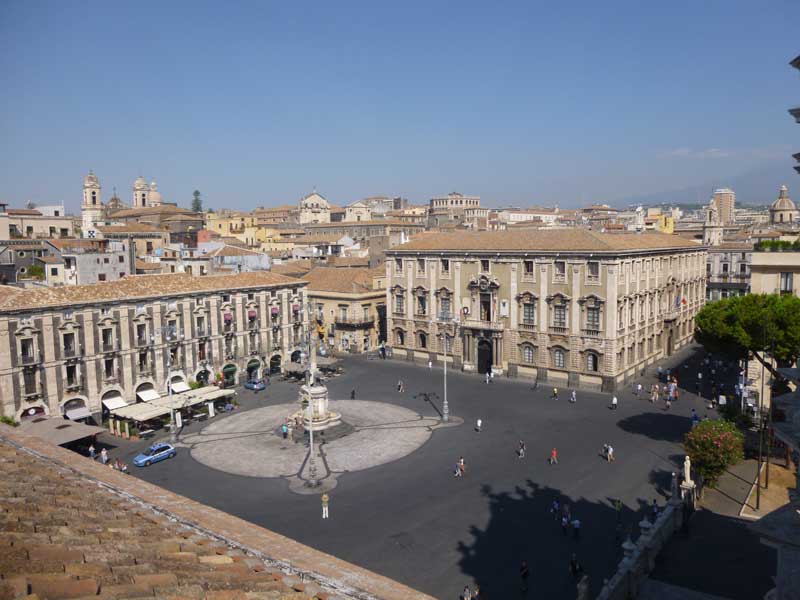
With excellent transport connections including the international airport just outside town, trains heading up and down the coast, and buses trundling off to many Sicilian destinations, Catania is a very practical hub. Whether you’re starting a holiday here, ending it, or using Catania as a base, you’ll find good and affordable places to stay and plenty of interesting options for activities and travel.
One of the most significant events which shaped Catania was the earthquake of 1693, which devasted most of south-eastern Sicily. The town was re-built in the Baroque style, and it was during this era that many of the town’s finest buildings came into being.
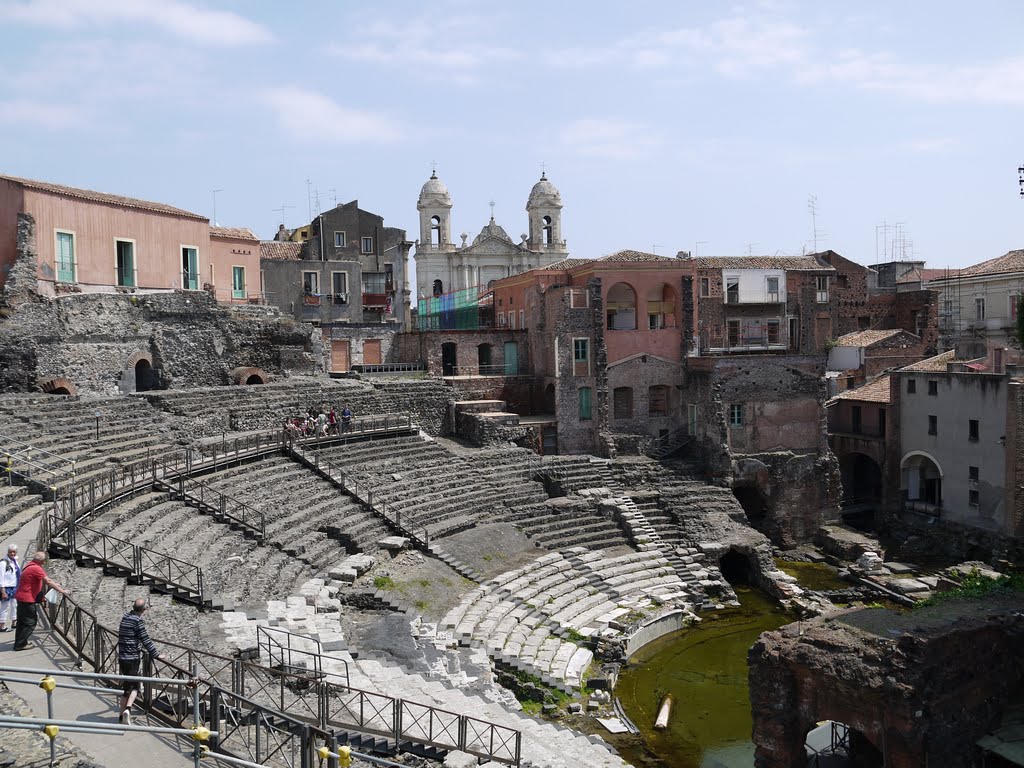
Founded by Greek colonists, Katane was subsequently conquered by Syracuse and then, during the Punic Wars, by the Romans. One of the best Roman structures that can still be seen is the Roman Theatre in Via Vittorio Emanuele, surrounded by later buildings. Next door is the round Odeon, a smaller auditorium. Close by in Via Rotonda, the church of Santa Maria della Rotonda is founded on the remains of Roman baths. The lava-and-marble Roman Amphitheatre, part of which can be seen in Piazza Stesicoro, dates to the second century AD.
Among Catania’s more recent sights are the many Baroque churches and palazzi, including the heavily-peopled facade of Palazzo Biscari. The Museo Civico in the stumpy grey fortress of Castello Ursino (1239-1250) houses a range of exhibits from all eras of Catania’s history.
Piazza del Duomo is Catania’s principal square, at the end of busy Via Etnea (named for the volcano), and most of the town’s tourist attractions are close by. In the centre is a much-photographed eighteenth-century lava statue of an elephant, supporting an Egyptian obelisk. The Duomo itself is one of Catania’s grandest sights. The facade dates from the Baroque rebuilding of the town, although some of the earlier church did survive the earthquake.
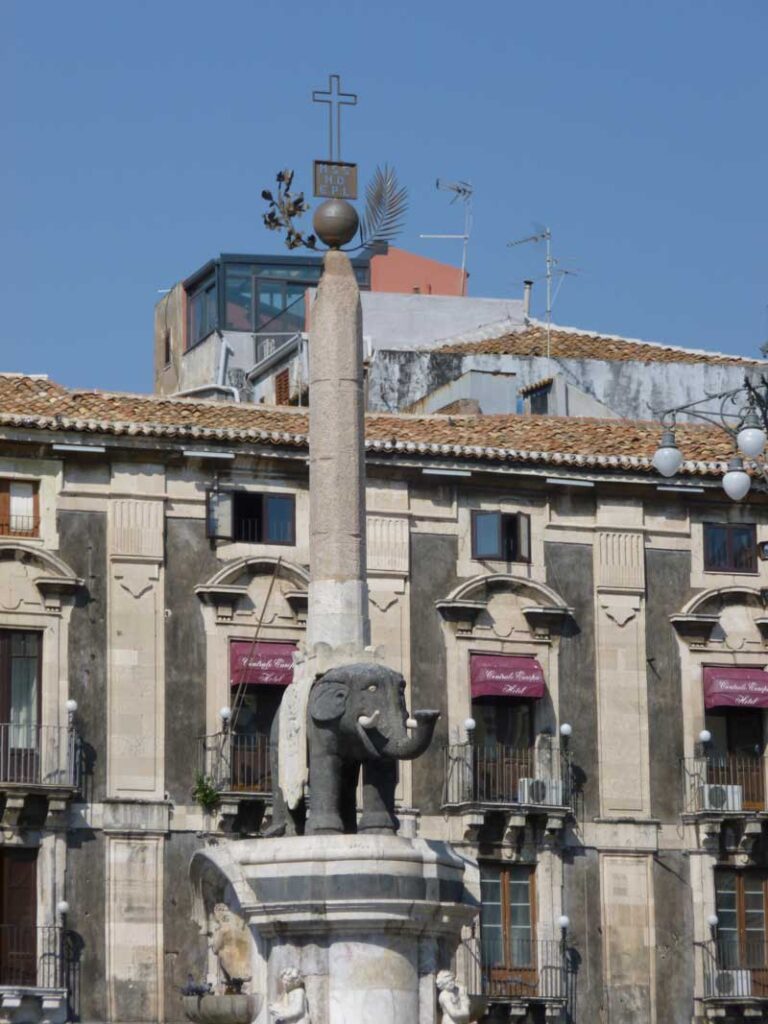
Remaining sights to see in Catania include the black-and-white Porta Garibaldi and the striking uncompleted facade of the Chiesa di San Nicolo in Piazza Dante. The town’s theatre, Teatro Massimo Bellini, has a grand frontage and a lavish interior. Its name honours local hero Vincenzo Bellini (1801-1835), the composer whose opera Norma gives its name to one of the culinary specialities of the region. The Museo Civico Belliniano (Piazza San Francesco 3) is free and contains mementoes from all stages of the composer’s short life. Also named after him is an ornamental public park, Villa Bellini.
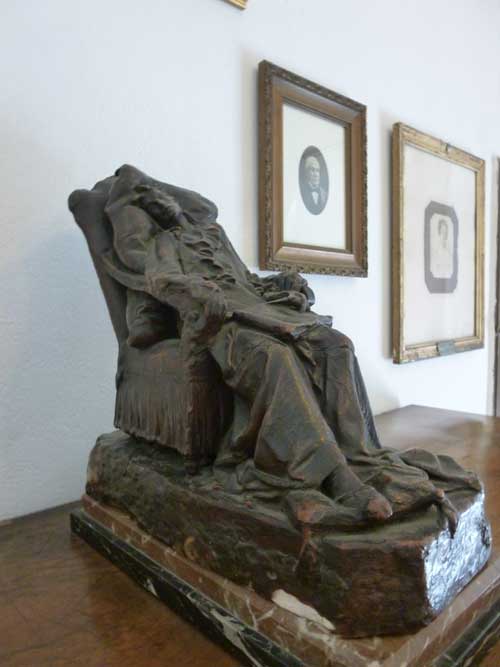
If you have the chance, the the local fish and food markets are fascinating and colourful, offering the chance to see and purchase produce from the surrounding area. You can eat very well at affordable prices in Catania, whether it’s street food in the food market or in the city’s restaurants at night.
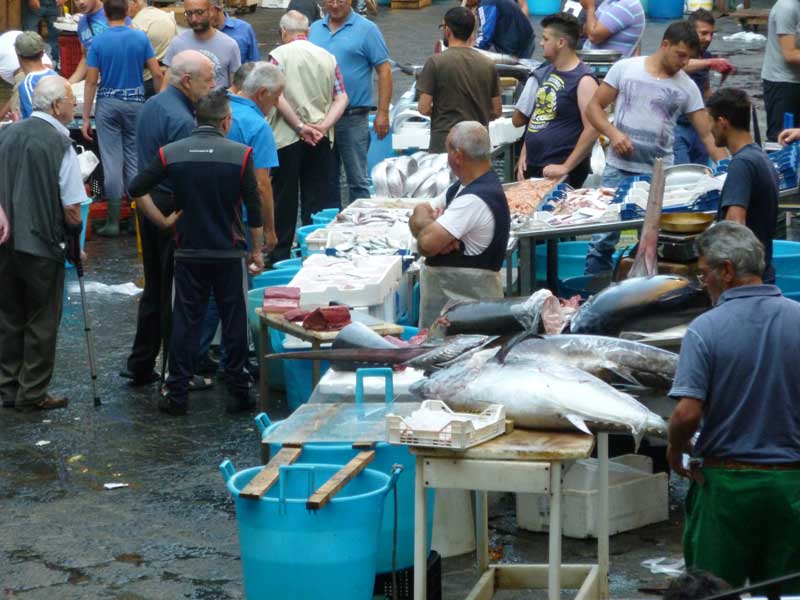
For a refreshing and scenic excursion from the city, consider a trip to the seaside on the local bus or a special tourist bus that connects central Catania with Aci Trezza and Aci Castello, along the coast. These are picturesque little coastal settlements, and the dramatic Norman castle which gives Aci Castello its name offers some splendid views.
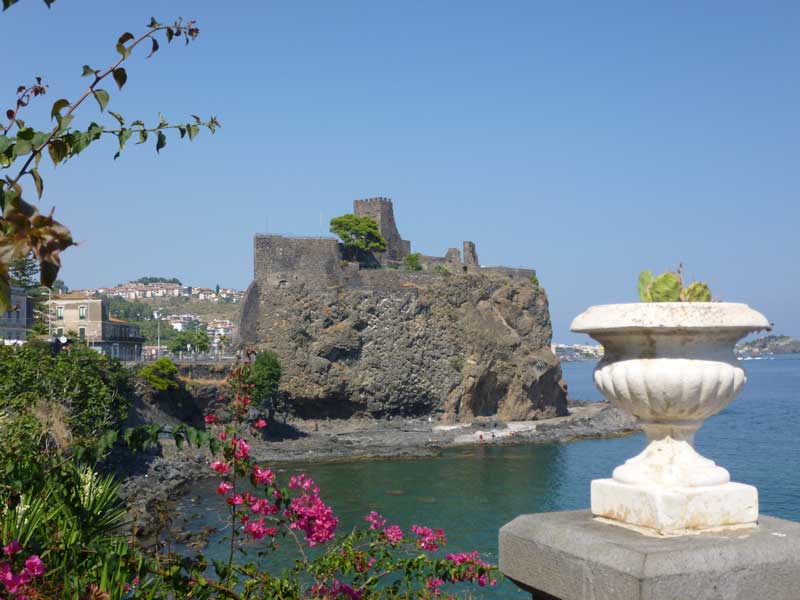
Etna
Etna, often called Mount Etna by English speakers, is the highest European volcano, its vast bulk bolstered by millennia of eruptions. Catania makes a good starting-point for volcanic excursions. The small towns around the National Park are interesting and worth touring if you’re spending some time in the area. Visiting the volcano itself is dependent on current conditions. There are various organised tours of the volcano – check at Catania’s tourist office (Via Cimarosa 10) to find out about these. They will also be able to give you advice on conditions around the craters. The Circumetnea is a small railway line which circles the base of the volcano, leaving from Catania and terminating in Riposto (where you can catch a mainline train back to town). There are several high-altitude spots which can be reached by car or public transport, the highest being Piazzale del Rifugio Sapienza.
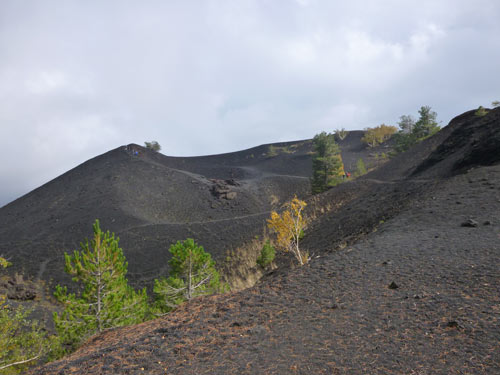
Travel to Catania
Catania is on the main Messina – Siracusa railway line, and is thus connected by direct trains to mainland Italy. Buses as well as trains serve local destinations, and urban buses cover the built-up area. Catania also has an airport.
Catania accommodation
There are some decent hotels in Catania, but also a good choice of B&BS which can be cheaper as well as offering a more personal welcome. I’ve stayed in several of these, and have always tried to choose a base that is both very central and on the route of the airport bus.
> Catania hotels, B&Bs and holiday apartments.
Highlights
Useful external links
Catania hotels, B&Bs & apartments
